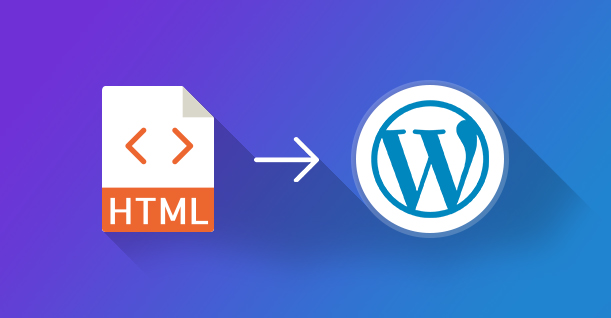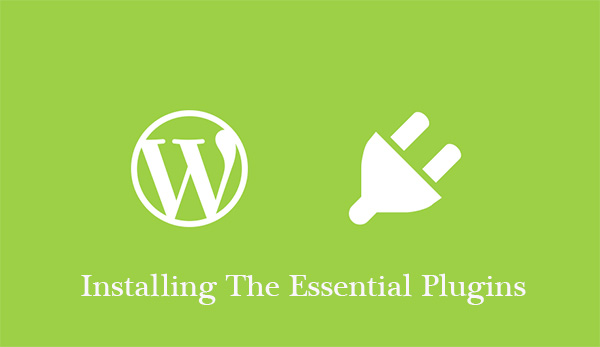
In the beginning of HTML to WordPress, the website was made with text and static HTML, but nowadays website is much more complex.
Websites created now provide a much richer and enjoyable experience for both the website developers and the visitors.
WordPress has become increasingly popular from the past time and has progressively become one of the best content management systems for most users of choice.
Now anyone with a WordPress installed and the perfect template can create a modern and beautiful website along with the best design and functionality, where no coding is required.
WordPress is a great option to adopt, but it does not mean that you have to leave your HTML website. Anyone can migrate their website from HTML to WordPress very easily while maintaining their content, design, and SEO ranking. In this article, we will guide you in migrating your HTML site to WordPress.
Table of Contents
Creating a plan to move your site from HTML to WordPress:
Before migrating your website, you need to create a plan. Below given are some of the points that one should keep in mind.
- Would you create a new domain or retain your existing domain name?
- Will your current URL structure will change? Yes, you will need to redirect your old HTML site URLs after the migration.
- Will you move all the content to your WordPress site? If want to move a small amount of content then it can done manually but for large content, you will require specific tools.
How to move your website HTML to WordPress:
Here we will start by setting up WordPress.
Setting up WordPress-
In this whether you are installing WordPress locally or with your hosting provider. Installing WordPress is very simple, many hosts also have just 1 click installation options and in the managed hosting they have already installed it for you.
One can install WordPress in a directory of its own or a separate domain, as per your choice.
Once your WordPress is setup and running, then you need to start adding content and building your new website.
Importing Content-
This is not an easy task, but still achievable. For successfully importing your existing content to your new WordPress website on different factors. If your old HTML website is based on CMS there might be an importing tool available.
One can start by looking at the given list of content importing scripts in the codex. If you found a match, then just follow the instructions and start migrating your content.
On the off chance that your old CMS is not on the list, you have to migrate your content manually. Here you just need to copy and paste the content and note the old URLs as you go.
In the case that you have custom CMS or database records without any importing tools and a high volume of content, you may need to bring in a specialist to move your content.
It becomes very vital to automate the content as the more the volume of content the higher the chance of human error. You also need to add all the images and other files, directly from your computer.
Design your new WordPress site:
Once you are done with migrating all your old content into your new website, then it’s time to build and design your new site and give it a nice look. There are several options for building your new site like:
- You can build your theme from the scratch.
- You can also download a template for your website from WordPress or from any other website as there are many free themes available.
- One can also take a free WordPress template and customize it as per their requirements.
- One can also alter their existing template of HTML to WordPress
- Also, there are many paid multi-purpose and responsive themes available.
Installing the essential plugins:

WordPress has a hundred of great plugins that give you great functionality to make your website extremely beautiful. This makes it extremely overwhelming for new users to find the right plugin.
Utilizing a WordPress plugin, you can replicate any of your HTML website functionality. There are numerous numbers both free and paid plugins that are extremely useful, but on the off chance that you did not find any plugin per your needs, you can always build a new one. You can sell it or provide it to other users for free according to your needs.
Only install plugins from a reputable website that help you reduce your page load time.
Redirecting links in WordPress:
After completing your work on the content, design, and functionality of your website, you need to check all the broken links on your site. As broken links can send visitors away from your site, we recommend utilizing a redirecting plugin.
Some of the great plugins one can utilize for the website are simple 301 redirecting redirects and the Redirection plugin. These plugins will help you easily redirect your broken links.
Pointing your domain to the new WordPress website:
Here you need to point your domain to the new website, as what is the use of doing all the hard work and migrating from HTML to WordPress if no one can view your site?
If you have set up your WordPress site on a new domain, then mostly you have utilized a temporary domain. Now you have to remove references to the temporary domain before pointing the domain to the new server.
On the off chance that you are planning to update your name server for your domain. In this case, if you have utilized a third-party CND, then you need to update your current DNS records. This typically includes updating your A records and leaving your server names in place.
Make sure that you check you’re your broken links before releasing your new HTML to the WordPress site for everyone to see it, review your site’s main pages to ensure they all are formatted properly also check that all your functionality is restored.
Set up your permalinks, and analytics, ensure that your new site is visible to search engines, and also remember to back up your old HTML site.
We hope that all the information given above is about how to convert your old HTML website to your new WordPress site.